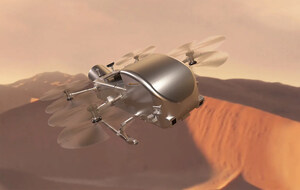WASHINGTON, Jan. 14, 2014 /PRNewswire-USNewswire/ -- Several companies, working closely with NASA, ended 2013 with an impressive string of achievements to build on in 2014 as the American aerospace industry continues to develop and demonstrate commercial human spaceflight capabilities with the potential to support both commercial and government customers.
(Logo: http://photos.prnewswire.com/prnh/20081007/38461LOGO)
The year will be pivotal for NASA's Commercial Crew Program (CCP) as the agency looks to announce one or more awards by August for Commercial Crew Transportation Capability (CCtCap) contracts that would lead to operational crewed flights to the International Space Station. NASA intends to use new commercial systems to fly U.S. astronauts to and from the station within the next three years.
NASA's industry partners are pursuing ambitious milestones this year as CCP moves forward. The partners are Blue Origin of Kent, Wash.; The Boeing Company of Houston; Sierra Nevada Corporation (SNC) of Sparks, Nev.; and Space Exploration Technologies (SpaceX) of Hawthorne, Calif.
Milestones planned by the companies include sophisticated software demonstrations, a free flight to evaluate a vehicle in a simulated space environment and launches to test the first of a new generation of launch abort systems. The goal of CCP is to develop a new generation of U.S. human transportation systems capable of delivering humans to low-Earth orbit from American soil.
"Our partners have steadily moved pieces from the drawing boards and computer screens to factory floors and test stands across the country," said Kathy Lueders, acting manager of CCP. "The new year offers exciting opportunities for these companies to demonstrate the reach and potential of their hard-earned innovations."
Blue Origin test-fired its BE-3 engine in 2013. It plans this year to review its assembly of a sub-scale propellant tank and conduct a review of the space vehicle's subsystems design.
With the completion of a detailed design review in 2013, Boeing continued to develop its spacecraft, the CST-100, confirming in this review the service module propulsion system was ready to move into the next phases: production and integration with the CST-100 spacecraft.
Boeing's certification plan for the CST-100 detailed several aspects of its development and operation, including plans for testing components and systems along with the spacecraft as a whole -- a plan that takes the spacecraft through development to the launch pad and on to mission operations.
"Boeing's goal is to develop a safe and reliable commercial space transportation system and these reviews are vital to meet that goal," said Gennaro Caliendo, NASA's Integration Team lead for Boeing. "They help ensure that the spacecraft and its myriad systems will work together to accomplish challenging missions, which require the utmost attention to detail."
NASA worked with a team of engineers and designers from SNC in 2013 to review detailed certification and systems safety plans for its Dream Chaser Space System.
"The roadmap to understanding how safe and reliable a crew transportation system is takes a lot of details and dedication from all parties involved," said Cheryl McPhillips, NASA's Partner Integration Team lead for SNC. "When building a system that is to be trusted enough to carry humans into space, the most important part is building in safety from the start. SNC has made significant progress with its Dream Chaser to date."
SNC plans to build on that progress in 2014 with wind tunnel tests and further advancement of its innovative main propulsion and reaction control systems, and a second free flight test of the Dream Chaser.
SpaceX's first commercial satellite launch on an upgraded Falcon 9 rocket gave NASA engineers an opportunity to review the vehicle's performance in flight following the Sept. 28 liftoff and ascent of the Falcon 9 v1.1 from Vandenberg Air Force Base in California. The company anticipates using the upgraded rocket to launch humans to destinations in low-Earth orbit.
"With the upgrade from version 1.0 to a 1.1, SpaceX introduced a number of new systems including new engines, new software and new avionics," said Derek Hassmann, NASA Partner Integration Manager working with SpaceX. "The overall conclusion is that SpaceX is on the right track. The goal really isn't to judge their design, but to see how they cope with anomalies, see how they track their processes and control their hazards and how they're able to deal with the unexpected."
The 2014 calendar for SpaceX includes increasingly detailed reviews of the company's integrated systems and progress on its ground systems. SpaceX will conduct two flights to test the Dragon's launch abort systems, powered by two SuperDraco thrusters that will push the Dragon into the sky instead of pulling the spacecraft up as previous launch abort systems have done.
Milestones achieved by CCP's partners are continuing to push commercial spacecraft and transportation system designs closer to reality. The successes of NASA and American aerospace companies are ushering in a new generation of space transportation capabilities, which will enable new opportunities for humans to live and work in space.
For more information about NASA's Commercial Crew Program and its aerospace industry partners, visit:
http://www.nasa.gov/commercialcrew
SOURCE NASA
WANT YOUR COMPANY'S NEWS FEATURED ON PRNEWSWIRE.COM?
Newsrooms &
Influencers
Digital Media
Outlets
Journalists
Opted In




Share this article